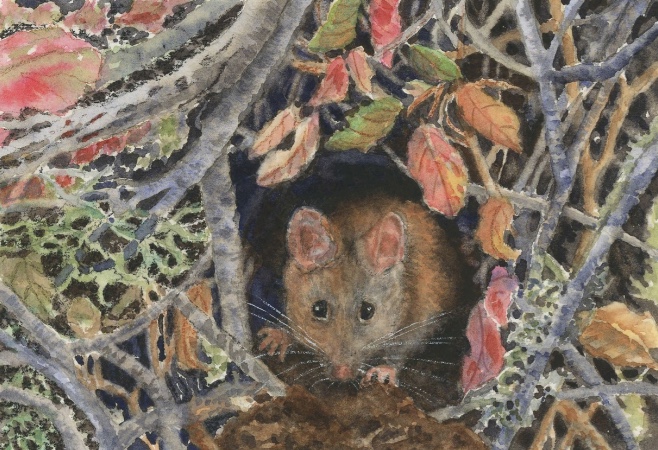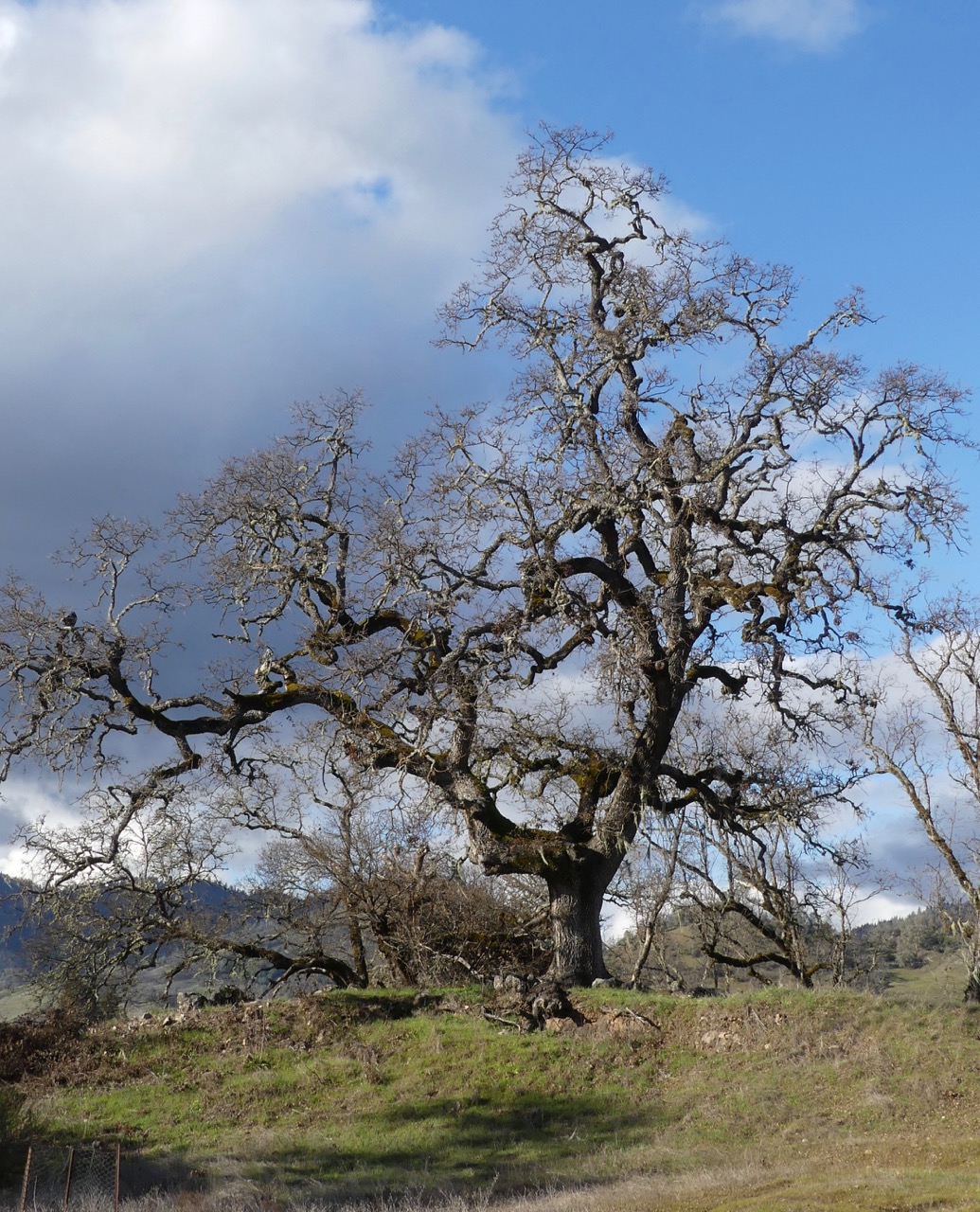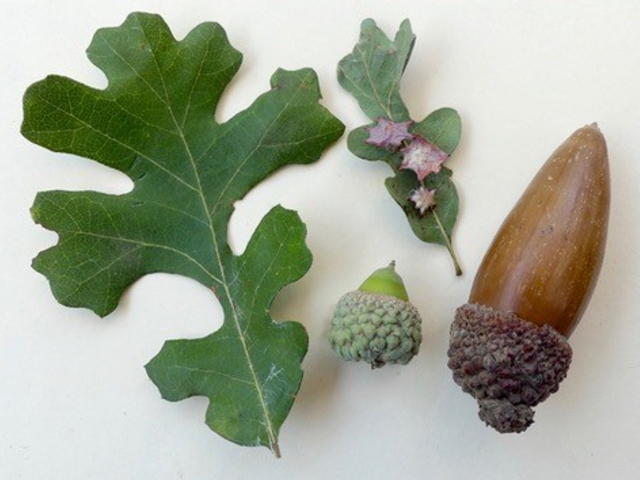LANGUAGE OF THE LAND:
SECRETS OF THE OAK WOODLANDS
January 25, 7 pm, free. Sponsored by Sonoma County Land Trust.
To join, click HERE.
“Sonoma County’s oak woodlands are teeming with life —plants and animals that exist in an astonishing variety of shapes, behaviors, and interrelationships. Many of these life forms depend on oaks, and some rely more on other plants that live in community with oaks. In a presentation illustrated with videos as well as photographs, author and naturalist Kate Marianchild will take us on a riveting tour of oak woodland trees and shrubs and the animals that can’t live without them. Don’t miss Kate’s closing story, “A Night in the Life of Lively the Woodrat.”
THE PLANTS AND ANIMALS OF BAY AREA OAK WOODLANDS
An Intimate Overview Sponsored by Peninsula Open Space Trust.
To watch the video of this talk, which I gave on March 17, 2022, click HERE.
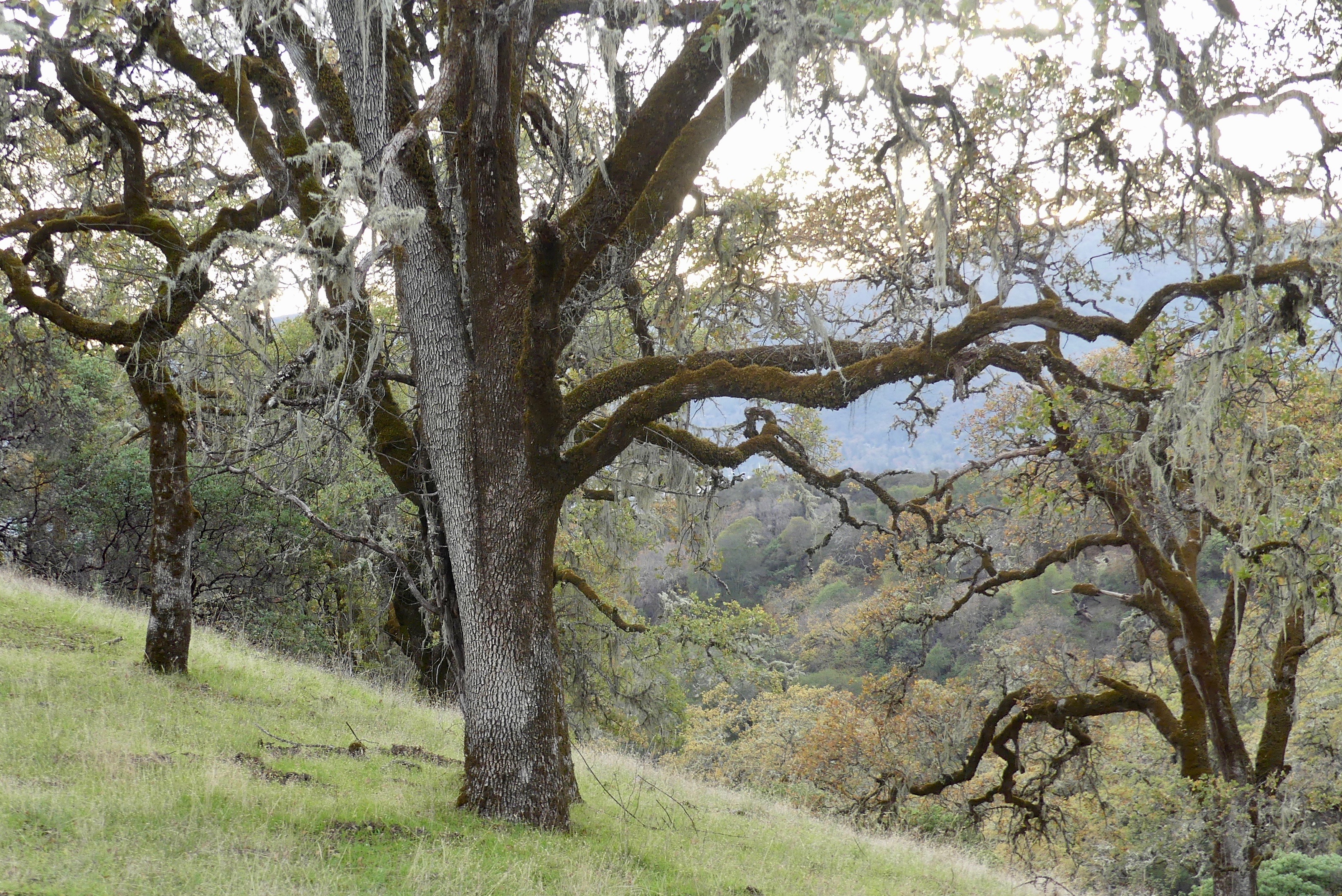
CALIFORNIA’S MAGNIFICENT OAKS AND THEIR MANY RELATIONS
To watch, click HERE.
California’s iconic and magnificent oaks support a more diverse array of organisms than any other terrestrial ecosystem in the state. In a presentation filled with wood ducks, woodrats, woodpeckers, and many othe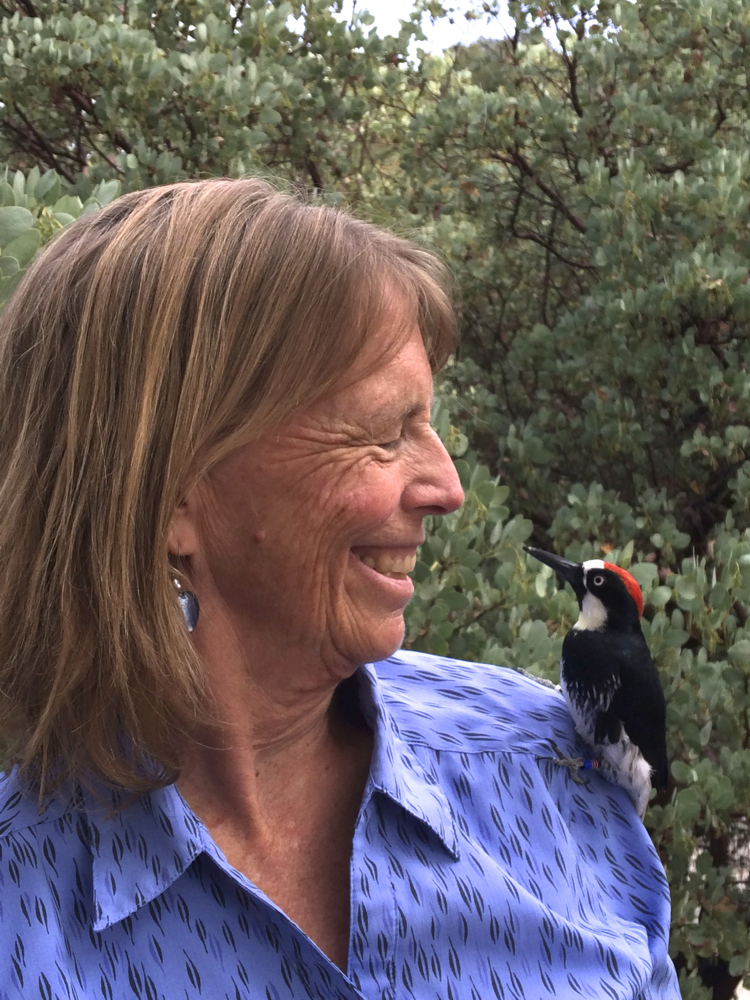 r species, author and naturalist Kate Marianchild will discuss the keystone role oaks play in oak woodland food webs. We’ll learn about symbiotic connections between oaks and other organisms, such as fungi, jays, and caterpillars, and we’ll marvel at the tiny wasps who bend enormous oak trees to their bidding. We will crawl with Kate through woodrat mansions, fight for breeding opportunities with acorn woodpeckers, and defend mistletoe with bluebirds. Who could stay away?
r species, author and naturalist Kate Marianchild will discuss the keystone role oaks play in oak woodland food webs. We’ll learn about symbiotic connections between oaks and other organisms, such as fungi, jays, and caterpillars, and we’ll marvel at the tiny wasps who bend enormous oak trees to their bidding. We will crawl with Kate through woodrat mansions, fight for breeding opportunities with acorn woodpeckers, and defend mistletoe with bluebirds. Who could stay away?
Kate Marianchild is the author of Secrets of the Oak Woodlands: Plants and Animals among California’s Oaks (Heyday, 2014). She lives in a yurt near Ukiah surrounded by six kinds of oak and abundant wildlife. When she is not giving talks, guiding walks, or observing nature, she swims, sings, and advocates for the preservation of native plants and insects. You can find her book, her oak identification guides, and close-focusing binoculars on this website.
WHO’S WHO AMONG THE OAKS? Click HERE to see the video.
(If you can, have some acorns and caps with you when you watch this video). Have you ever wondered what kinds of oaks dot California’s hills and line our fertile valleys, providing our state’s most wildlife-rich habitats? Well, help is at hand. In a talk filled with humor, hands-on sensory learning, and fun memory aids, author and naturalist Kate Marianchild will help you identify northern California’s oaks by their acorns, cups, leaves, and galls. With acorns in hand, you will learn how to distinguish a valley oak from an Oregon oak, and a canyon live oak from a coast live oak. Kate will also share some cool facts about oaks, including their co-evolutionary relationships with California scrub-jays and caterpillars. The one-hour talk will be followed with Q & A.
THE AMAZING MANZANITA Click HERE to see the video.
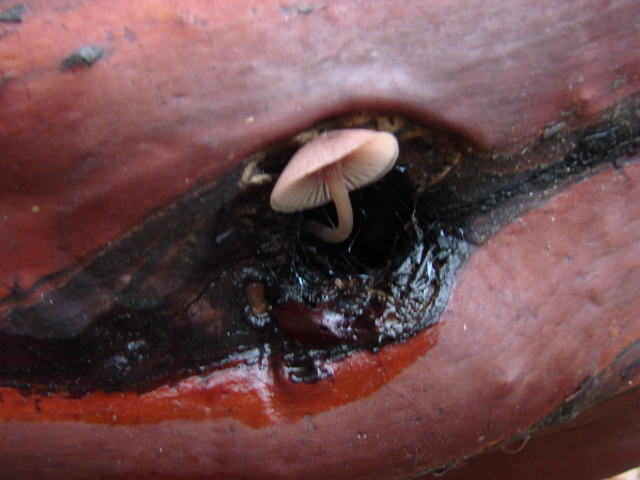 Manzanita! The word conjures visions of curvy reddish limbs reaching outward and upward into the sky, a feast for the fingers
Manzanita! The word conjures visions of curvy reddish limbs reaching outward and upward into the sky, a feast for the fingers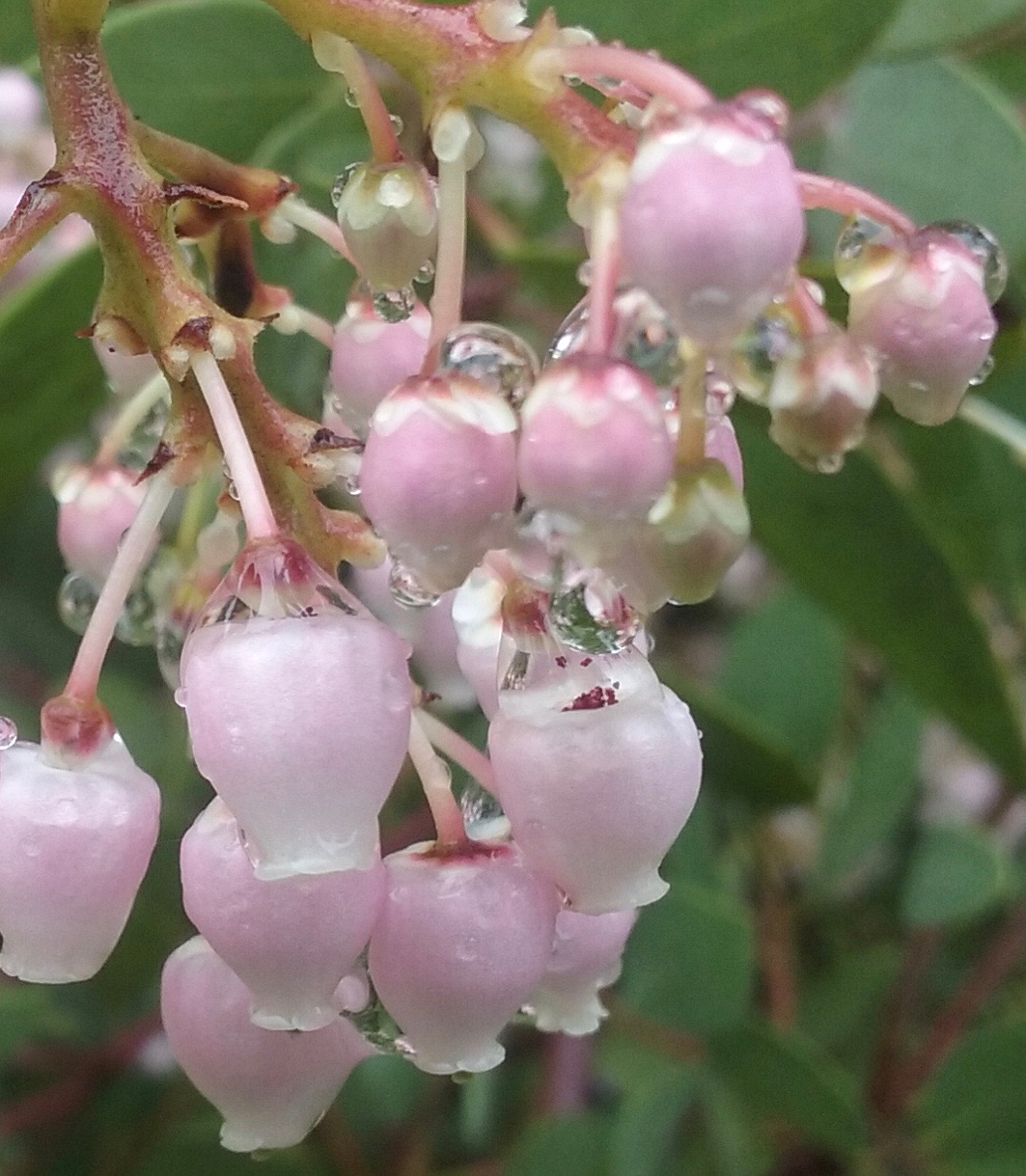 as well as the eyes. But there is much more to this plant than its striking beauty, including its talent for thriving in tough conditions. It is no accident that 193 species and subspecies have emerged since manzanita first appeared near the central California coast 37 million years ago.
as well as the eyes. But there is much more to this plant than its striking beauty, including its talent for thriving in tough conditions. It is no accident that 193 species and subspecies have emerged since manzanita first appeared near the central California coast 37 million years ago.
This January, when manzanitas of all shapes and sizes will be glowing with small white or pink flowers, author and naturalist Kate Marianchild will explain some of manzanita’s “mojo” ––its profound partnerships with fungi and bumblebees; its super-thin skin that both helps and hinders it; and its waxy leaves that follow the sun from dawn to dusk. She’ll tell stories about musical pollination in middle C; unscrupulous “nectar thieves,” and bark that peels around summer solstice. She’ll also emphasize manzanita’s vital role in the lives of animals––from ants and silk moths to birds and bears.
CALIFORNIA’S OAKS AND THEIR MANY RELATIONS
To watch video, click HERE.
I was asked to gear this presentation to middle and high school students by keeping it to 1/2 hour (plus Q & A). To cater to youthful attention spans, I also decided included some videos that I had taken, including some really cool ones of a northern flicker nest. As it turned out, most people chose to stay after the Q&A, so this video is about an hour long.
Wednesday, November 17, 2021. 7:30 pm. 
California’s magnificent oaks support a more diverse array of organism than any other other trees in the state. In a presentation filled with wildlife––from spiders and lizards to woodpeckers, woodrats, and bears––author and naturalist Kate Marianchild will discuss the keystone role oaks play in food webs. She’ll talk about co-evolutionary connections between oaks and caterpillars, jays, and lichens, and we’ll marvel at the tiny wasps who bend huge oaks to their bidding. As Kate shares stories of oak woodland species, we’ll fight with woodpeckers for mating opportunities, crawl through woodrat houses looking for rattlesnakes, and plummet to the ground with squirrels as they use their tails as both parachutes and landing pads.
Before this talk, try to collect an acorn or two from at least two kinds of oak in places where you have permission to look. If you can, also spend some time observing the behaviors of woodpeckers, jays, or other birds; lizards; squirrels; and anything else that you see in or under oaks.
OAKS: A HUB OF BIO-DIVERSITY. Click HERE to watch.
California’s oak woodlands support more life than any other type of terrestrial ecosystem in the state. Kate Marianchild will discuss some of the countless organisms that depend on oaks––from caterpillars and lizards to woodrats, wood ducks, and bears. She’ll talk about mycorrhizal fungi and scrub-jays, both of which are beneficially symbiotic with oaks, and other species, such as oak mistletoe and acorn woodpeckers, that give little to the oaks that feed them but support numerous other oak woodland animals. This 1/2-hour slide lecture will be followed by a 15-minute Q&A.
At 2:45, Dr. Sherrie Smith-Ferri (Dry Creek Pomo), curator of “A Virtual Celebration of Oaks and Acorns,” will give an illustrated lecture titled: “Acorns: Telling Good Nuts from Bad Nuts.
Many people know that acorns were a major food source for many California Indian peoples and that, given acorns’ high tannin content, it takes a lengthy preparation process to make them edible. However, few people understand the seemingly simple point where this process begins, harvesting acorns. Come and hear from Dry Creek Pomo elder Sherrie Smith-Ferri on what makes good nuts good and bad nuts bad.

